#robert macneil
Text

RIP Robert MacNeil
#sesame street#robert macneil#kermit the frog#reporter#news anchor#pbs#shaking hands#muppet#muppets#gif#muppet gif#muppets gif#sesame street gif#gifs of puppets#rip robert macneil
51 notes
·
View notes
Photo

Robert MacNeil
22 notes
·
View notes
Text
R.I.P. Robert McNeil
PBS’s Robert McNeil (1931-2024) passed away back on April 12.
On the Newshour, Jim Lehrer, like most of McNeil’s friends and colleagues, used to call him “Robin”, but I’ll refrain from taking that liberty. I don’t usually memorialize straight-up news reporters here, but I have a couple of reasons for fudging it in this case.
One is McNeil’s nine part educational tv series The Story of English…

View On WordPress
1 note
·
View note
Text

Robert MacNeil, the longtime broadcast journalist and co-anchor of “The MacNeil/Lehrer Report,” died Friday. He was 93.
He last signed off officially in 1995..
Hopefully his golden years, long in number, were healthy and happy. May he rest in peace.
0 notes
Link
November 11, 2022
By Katherine Rosman
ARLINGTON, Virginia (The New York Times) — It was her last time as an election night anchor, but Judy Woodruff was not in the mood to talk about how she was feeling. With Congress hanging in the balance and election denialism in the air, she was too busy, too focused on the task at hand, to reflect on how she had gotten to this moment in a career that began more than 50 years ago.
“Maybe when the evening is over and we wrap it up and give each other a high-five or a hug or whatever we do, maybe then it will hit me,” she said at 7:46 p.m. on Tuesday, during a rare break in an eventful broadcast that would stretch past midnight.
One of the leading television journalists of her generation, Ms. Woodruff, 75, made her name while chronicling Jimmy Carter’s presidential campaign for NBC in the mid-1970s, a time when it was exceedingly rare for women to cover politics. On Tuesday, while waiting for the midterm results to come in, she was sitting with her usual ramrod-straight posture on the set of “PBS NewsHour,” the no-nonsense nightly news program that she has led as the sole anchor and managing editor since 2016.
A takeout dinner was within reach — corn and crab chowder in a white to-go container, with a whole wheat roll on the side — but she wasn’t able to have more than a few spoonfuls before she had to go back on the air.
“I have been so consumed in the last few days with poring over newspapers and research papers,” she said. “I am trying so hard not to make a mistake, to get somebody’s name wrong, to call somebody a Democrat who is a Republican, to pronounce somebody’s name wrong.”
0 notes
Photo



Game Wizard & Blue Sky Hobbies purchase: Conan the Barbarian 258 (cover by Mike Docherty and Ernie Chan), 263 (cover by Mike Docherty and Ricardo Villagran), and 268 (cover by Colin MacNeil).
#conan#conan the barbarian#marvel comics#robert e howard#ernie chan#mike docherty#ricardo villagran#colin macneil
1 note
·
View note
Text
Blackcrowing's Master Reading List

I have created a dropbox with pdfs I have gathered over the years, I have done my best to only allow access to documents which I found openly available through sites like JSTOR, Archive.org, or other educational resources with papers available for download.
That being said I ALSO recommend (I obviously have not read all of these but they are either in my library or I intend to add them)
📚 Celtic/Irish Pagan Books
The Morrighan: Meeting the Great Queens, Morgan Daimler
Raven Goddess: Going Deeper with the Morríghan, Morgan Daimler
Ogam: Weaving Word Wisdom, Erynn Rowan Laurie
Irish Paganism: Reconstructing Irish Polytheism, Morgan Daimler
Celtic Cosmology and the Otherworld: Myths, Orgins, Sovereignty and Liminality, Sharon Paice MacLeod
Celtic Myth and Religion, Sharon Paice MacLeod
A Guide to Ogam Divination, Marissa Hegarty (I'm leaving this on my list because I want to support independent authors. However, if you have already read Weaving Word Wisdom this book is unlikely to further enhance your understanding of ogam in a divination capacity)
The Book of the Great Queen, Morpheus Ravenna
Litany of The Morrígna, Morpheus Ravenna
Celtic Visions, Caitlín Matthews
Harp, Club & Calderon, Edited by Lora O'Brien and Morpheus Ravenna
Celtic Cosmology: Perspectives from Ireland and Scotland, Edited by Jacqueline Borsje and others
Polytheistic Monasticism: Voices from Pagan Cloisters, Edited by Janet Munin
📚 Celtic/Irish Academic Books
Early Medieval Ireland 400-1200, Dáibhí Ó Cróinín
The Sacred Isle, Dáithi Ó hÓgáin
The Ancient Celts, Berry Cunliffe
The Celtic World, Berry Cunliffe
Irish Kingship and Seccession, Bart Jaski
Early Irish Farming, Fergus Kelly
Studies in Irish Mythology, Grigory Bondarnko
Prehistoric Archaeology of Ireland, John Waddell
Archeology and Celtic Myth, John Waddell
Understanding the Celtic Religion: Revisiting the Past, Edited by Katja Ritari and Alexandria Bergholm
A Guide to Ogam, Damian McManus
Cesar's Druids: an Ancient Priesthood, Miranda Aldhouse Green
Animals in Celtic Life and Myth, Miranda Aldhouse Green
The Gods of the Celts, Miranda Green
The Celtic World, Edited by Miranda J Green
Myth and History in Celtic and Scandinavian Tradition, Edited by Emily Lyle
Ancient Irish Tales, Edited by Tom P Cross and Clark Haris Slover
Cattle Lords and Clansmen, Nerys Patterson
Celtic Heritage, Alwyn and Brinley Rees
Ireland's Immortals, Mark Williams
The Origins of the Irish, J. P. Mallory
In Search of the Irish Dreamtime, J. P. Mallory
The Táin, Thomas Kinsella translation
The Sutton Hoo Sceptre and the Roots of Celtic Kingship Theory, Michael J. Enright
Celtic Warfare, Giola Canestrelli
Pagan Celtic Ireland, Barry Raftery
The Year in Ireland, Kevin Danaher
Irish Customs and Beliefs, Kevin Danaher
Cult of the Sacred Center, Proinsais Mac Cana
Mythical Ireland: New Light on the Ancient Past, Anthony Murphy
Early Medieval Ireland AD 400-1100, Aidan O'Sullivan and others
The Festival of Lughnasa, Máire MacNeill
Curse of Ireland, Cecily Gillgan
📚 Indo-European Books (Mostly Academic and linguistic)
Dictionary of Indo-European Concepts and Society, Emily Benveniste
A Dictionary of Selected Synonyms in the Principle Indo-European Languages, Carl Darling Buck
The Horse, the Wheel and Language, David W. Anthony
Comparative Indo-European Linguistics, Robert S.P. Beekes
In Search of the Indo-Europeans, J.P. Mallory
Indo-European Mythology and Religion, Alexander Jacob
Some of these books had low print runs and therefore can be difficult to find and very expensive... SOME of those books can be found online with the help of friends... 🏴☠️
library genesis might be a great place to start... hint hint...
#books#book#resource#blackcrowing#pagan#paganism#irish mythology#celtic#irish paganism#irish polytheism#celtic paganism#celtic polytheism#celtic mythology#indo european#indo european mythology#historical linguistics#paganblr#masterlist#irish reconstructionism#irish reconstructionist#celtic reconstructionist#celtic reconstructionism#masterpost
95 notes
·
View notes
Text
I feel like "Lower Decks" fits so easily into 1990s Trek canon that if you watched them altogether for the first time, the only real tell that 20 years had gone by would be little things like Robert Duncan MacNeil's voice sounding older or PADDs now working like smartphones.
47 notes
·
View notes
Photo

Robert Macneil
17 notes
·
View notes
Text
THE AARONS 2023 - Worst Film
It’s a marvel this category isn’t filled up with superhero films after the year they’ve had. Here are The Aarons for Worst Film:

#10. 65

A Quiet Place screenwriters Scott Beck and Bryan Woods don’t knock it out of the (Jurassic) park with their subsequent Spielberg homage. 65 will have viewers counting down the seconds until they can go home. The science-fiction tale strands stars Adam Driver and Ariana Greenblatt in a B-movie bereft of a reason to see it. The fusion of futuristic tech and ferocious animals should have been easy fodder for frivolous entertainment. Instead, the sluggish pace of the film’s imminent extinction event suggests it wasn’t a meteor or da ice age that killed the dinosaurs; it was extreme boredom.

#9. Rebel Moon - Part One: A Child of Fire

Director Zack Snyder likes to paint himself as a rebel against a restrictive studio system while being constantly given new opportunities without cause. His latest big-budget misfire is a childish mash-up of Star Wars and Seven Samurai. Par for the course, the prosaic director copies his inspirations while completely misunderstanding their objectives. Already, the film’s awkward and abruptly-ended parade of thinly-sketched characters is being billed as another incomplete vision, requiring not just two parts but two cuts of each part to truly fulfill Snyder’s intentions. Maybe his hardcore fans will be pleased at the end of the prolonged journey; everyone else will be over the Moon long before then.

#8. The Exorcist: Believer
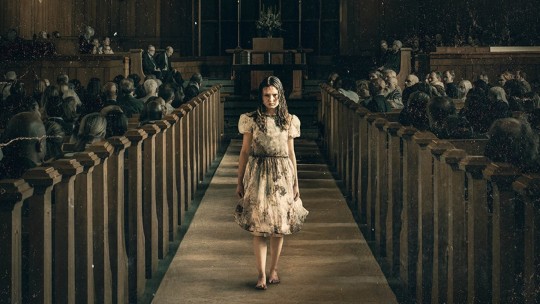
From the beginning, the involvement of David Gordon Green inspired little faith in Believer. Sure enough, the director of Halloween kills interest in his proposed trilogy one film sooner than his last. It’s unclear what exactly led the studio to release a sequel fifty years later that’s tamer than a TV edit of the original. It surely couldn’t have been the return of Ellen Burstyn in her Oscar-nominated role of Chris MacNeil given how quickly the film disfigures and discards the character. That said, it may be for the best that she could excise herself from the proceedings before its embarrassing ending. The franchise is no stranger to desecration but, even at its worst, it was never before this uncompelling.

#7. Five Nights At Freddy’s

Topping the box-office may have demonstrated audiences’ appetite for the haunted pizzeria franchise but, make no mistake, the film adaptation of Freddy’s is as run-down as its central establishment. The animatronic mascots at center stage only manage the most pedestrian of jump-scares; they’re far from the only ones just going through the motions. The script, written in part by franchise creator Scott Cawthon, stretches out its thin premise with banal characters and a bizarre child-custody B-plot. It might have been entertaining if it had been any more cheesy. Instead, Freddy’s only serves up an interminable runtime; five nights has never felt so long.

#6. Hypnotic

Hypnotic is aptly named; the thriller from Spy Kids director Robert Rodriguez certainly commands one’s attention. The plot, which revolves around Ben Affleck sleepwalking through a conspiracy involving dueling factions of psychics, is simply too inane to ignore. Rodriguez wrote his initial script back in 2002 but was clearly susceptible to outside influences; the film rips off several works that were released before and since, including the dream-like architecture of Inception. Although the director may pride himself on his low-budget prowess, even he can’t make those knock-off sequences look good (though they’re not the silliest instance of replicating elaborate scenery on a miniscule budget here). The film fulfills its intentions on one front: once it’s all over, audiences will have a hard time believing any of it was real.

#5. Children of the Corn
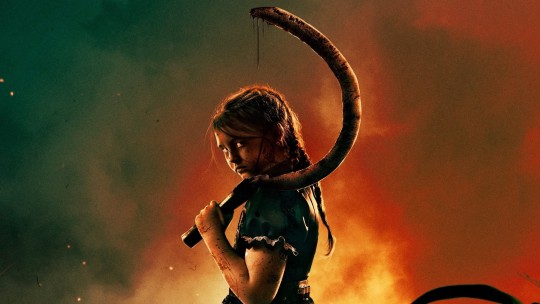
The latest offspring of the rotten franchise at least had a kernel of a good idea: the remake roots its characters’ motivations in righteous fury at environmental recklessness rather than strictly religious fervor. However, Children never develops this into any kind of sustenance. The horror here is as, ahem, corny as can be, particularly its stale translation of demonic entity He Who Walks Behind the Rows. Director Kurt Wimmer shows no growth as a director since his last film in 2006, the infamous Ultraviolet; the wooden child actors at least have their youth as an excuse. Sadly though, if ranked within the rest of the series, this one would still land in the middle of the row.

#4. Haunted Mansion

2023 was home to many failures for The Walt Disney Company, but none quite as ghastly as the new Haunted Mansion. It’s baffling how a film this overstuffed with actors (including Rosario Dawson, Owen Wilson, and Danny DeVito among many others) could end up this vacant. Indeed, the biggest throughline of the theme-park adaptation is not its attempted reflection on grief but its pervasive and perverse product placement (One character’s tearful monologue about his dead wife comes complete with a prominent Baskin Robbins namedrop). It’s definitely haunting, just not in the way they hoped for.

#3. My Big Fat Greek Wedding 3

The Big Fat franchise became even more bloated last year with a picture that can most charitably be described as ‘an all-expenses paid trip to Greece for its cast’. There’s certainly no storytelling reason why audiences are still following the adventures of this extended family, which haphazardly include a last-minute wedding of two very minor characters to justify its title. Nia Vardalos finally receives the director’s chair in addition to her regular writing work just in time for there to be no fresh direction to take things in. If she tries to reunite everyone for a fourth go-round, they would be wise to divorce themselves from it as quickly as possible.

#2. Pet Sematary: Bloodlines

Bloodlines resurrects the series last seen in 2019; if this was how it was going to come back, it should have stayed buried. While Stephen King is an imaginative writer, trying to stretch a single chapter of any novel into a feature-length film is like getting blood from a stone. The zombie prequel stumbles its way from scene to scene in search of life, but Bloodlines has nothing for audiences to relate to. Even screen icons like David Duchovny and Pam Grier can’t rouse any interest. Exploiting known franchises may be easy, but, sometimes, making anything else instead is better.

AND THE WORST FILM OF 2023 IS…
#1. Winnie the Pooh: Blood and Honey

Disney slowly losing their stranglehold on intellectual property is a bit bittersweet; Honey is bad enough to sour anyone on the idea of a public domain. The shoddy slasher film, which blustered its way onto the marketplace as soon as the filmmakers could profit from it, is barely recognizable as Pooh but unmistakable as crap. Making the lovable animal into a feral murderer may be legal now, but writer/director Rhys Frake-Waterfield didn’t think, think, think up any other ideas beyond just stirring the pot. Winnie is hoping to prey on one’s curiosity with its premise alone. Word of advice? Don’t bother.

NEXT UP: THE 2023 AARON FOR BEST DIRECTOR!
#film#TheAarons#TheAarons2023#TheAaronsFilm#worst of 2023#bad movies#worst film#65#rebel moon#the exorcist believer#five nights at freddy's#hypnotic#children of the corn#haunted mansion#my big fat greek wedding 3#pet sematary bloodlines#winnie the pooh blood and honey
2 notes
·
View notes
Photo

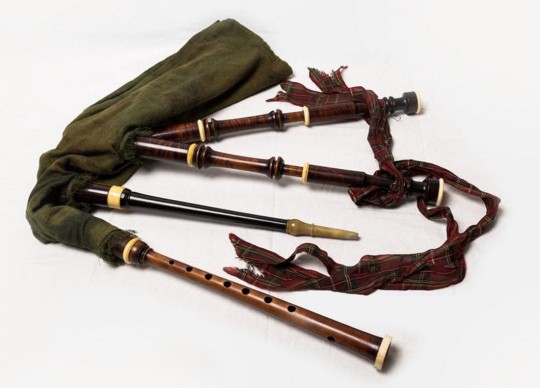
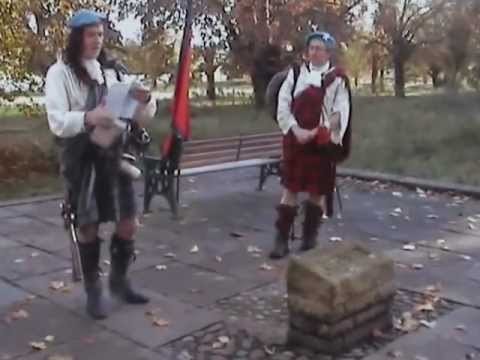

On November 15th 1746, James Reid was executed at York for being a part of the Jacobite uprising.
Reid, a native of Angus, was among many Jacobites captured at Carlisle and as per usual dates are a bit iffy with this post.
The following is an extract from Grattan Flood’s Story of the Bagpipe. “So powerful a factor was the Scotch bagpipe in working up enthusiasm for the Stuart cause that it was regarded as an instrument of war. This point is amply proved by the fact that James Reid, a Scotch piper, was tried at York for high treason, the capital offence being that as no Highland Regiment ever marched without a piper; therefore, his bagpipe in the eye of the law was an instrument of war.
“Reid suffered death at York on November 6, 1746, as is reported in the contemporary Caledonian Mercury.”
On checking this information in the National Library [in Edinburgh] it was noted that this information was given in the Caledonian Mercury of November 25, 1746. The following is the extract:
“On Saturday 15th James Reid was executed for high treason at York. He was of the Shire of Angus and a private man in Lord Ogilvy’s regiment”.
Lord Ogilvy was only 21 years old and commanded two battalions. He had held a commission in the French Army and was very popular with his men. The Angus men were supposed to be the best equipped and according to some accounts the best disciplined in the Prince’s army. They kept the retreating right wing at Culloden from being cut to pieces. Lord Ogilvy escaped to France via Norway and became a general in the French army. He eventually regained his estates. He died in 1803.
In the three volumes of Prisoners of The ’45 by Sir Bruce Seton and Jean Gordon Arnot (published in 1929) there are several hundred names of soldiers of Charles Edward Stuart. Some of the pipers listed are as follows:
John Sinclair. Piper in Ogilvy’s regiment. Town piper of Arbroath. Discharged March 4, 1747.
John Ballantyne. Piper in Lord George Murray’s regiment. Taken at Carlisle. Tried at York on October 2, 1746 and acquitted.
Nicholas Carr. Piper in Glenbucket’s regiment; acquitted October 1746.
Robert Jamieson. Piper in the Duke of Perth’s regiment; captured at Carlisle and transported.
Allan MacDougall of Duke of Atholl’s and Lord Nairn’s regiments; served as a blind Highland piper and was taken at Falkirk. He was pardoned in 1747. What a blind man could do in an army had only one reason. He must have been an exceptionally talented and well known piper. Could this have been Blind MacDougall mentioned in Angus MacKay’s MS? His name is associated with the following tunes: The King’s Taxes, Farewell Donald, Lament For Captain MacDougall, the Nameless tune (Book 4 of the Piobaireachd Society Collection (three Nameless tunes are shown but which one is MacDougalls is not clear), Cumha Iain Cheir, The Duke of Perth’s Lament and Lachlan MacNeill of Kintarbert. Angus MacKay states that this MacDougall is Ronald MacDougall and it is not likely that there are two blind MacDougalls. It could be reasonable to assume that this blind MacDougall piper is the same man.
And the main subject of this post;
James Reid. Piper in Ogilvy’s regiment. Executed York on November 15, 1746. The relevant entry is:
2800. Reid, James. Piper, Ogilvy’s. 30.12.45 Carlisle; Lancaster Castle, York. Executed York 15/11/46. Angus. Taken at capture of Carlisle. It was pointed out at his trial at York on 2nd Oct. that he was only a piper, but he was found guilty but recommended to mercy. Nevertheless he was executed. The Court ruled that ‘no regiment ever marched without musical instruments such as drums, trumpets and the like; and that a Highland regiment never marched without a piper; and therefore his bagpipe, in the eye of the law, was an instrument of war.” – Baga, lxix. 193; S.P.D., 79-26, 91-77.
Also listed were several drummers and fiddlers.
Manson, in his book The Highland Bagpipe, states that Charles Edward had 32 pipers playing before his tent at meal times. The relevant papers a decisions about hanging Reid have been checked up in the [National] Library in Edinburgh and in London and I have yet to find any government decision to hang rebel pipers. James Reid was not the only piper – he was just the unlucky one as the rest got off or were transported.
It would appear that the decision to hang Reid was made by the court at York in isolation and not under any official directive. There is little record of pipers being harassed, imprisoned, or hanged for playing the pipes after the ’45 and we know that Joseph MacDonald compiled his Compleat Theory of the Scots Highland Bagpipe in 1760, 14 years after the troubles. It would be reasonable to assume that piping did not suffer unduly.
James Reid must be unique in piping history as the only one who lost his life because he was a piper.
Black Watch museum in Perth also hold information on Jacobite prisoners, including James Reid, they appear to records taken directly from the hearings;
“John Porteous was tried next, who appeared to be Deferter from one of our Regiments: He alledged, in Excufe of his Offence, and as a Plea to ftop Sentence, that he had the Promife of his Royal Highnefs the Duke of Cumberland for his Pardon – Guilty.
“James Reid was then tried, whom the Witneffes for the Crown plainly proved to have engaged with the Rebels, and to have acted as a Piper to a Rebel Regiment, tho’ it did not appear that he had ever carried any Arms; upon which he was recommended to Mercy by the Jury. The Court obferved upon this, that every Perfon who joined any Set of People engaged in an open Rebellion, tho’ they did not bear Arms, they were guilty of High Treafon; that no Regiments ever marched without Mufical Inftruments, as Drums, Trumpets, or the like; and that in an Highland Regiment there was no Moving without a Piper, and therefore his Bagpipe, in the Eye of the Law, was an Inftrument of War. The Jury upon this would have retracted their Recommendation, but the Court told them, it muft not now be permitted — Guilty. Then the Court adjourned to Saturday.
“On Saturday, James Main was firft brought to the Bar; but his Counfel moving for farther Time, upon Account of fome of his Witneffes being on the Road, the Court was fo favourable, as to poftpone his Trial.
“Then John Long was brought upon his Trial, and fix Witneffes were examined for the Crown, to prove that he had acted as a Surgeon’s mate in the Rebel Army; but the Proof not coming up to the Species of High Treafon laid in the Indictment, he was acquitted on the Motion of the King’s Counfel.
“James McColley was tried next, and was proved by four Witneffes to have appeared in Arms at feveral Places: He did not attempt to contradict this in his Defence, but examined fome Witneffes to fhew that his Cafe was the fame with Charles Robinfon’s — Guilty.”
In total there were 22 Jacobites executed at York in the wake of the ‘45 Crann Tara held a commemorate event in York in their memory ib 2007, a simple stones marks where they met their end. You can watch the commemoration on Youtube here https://www.youtube.com/watch?v=a05QSzs_u60
21 notes
·
View notes
Video
vimeo
KIA from TOBY MORRIS on Vimeo.
Kia Seltos (Director's Cut)
Director: Toby Morris
Agency/Production Co: Elastic Studios
CD: Simon Thomas
EP: Briana Miller
Producer: Avril Dunn
DOP: Gregoire Liere, Ziga Zupancic
Production Manager: Nicolanne Cox
Production Coordinator: David Bedelis
1st AD: Darin Berlin
2nd AD: Davis Jensen, Frankie Noble-Shelton
1st AC: Steivan Hasler, Rhys Nicholson
2nd AC: Sam Connelly, Claudia Butters
Steadicam: Jason Rodrigues
Robot Arm Opp: Daniel Miller
Gaffer: Jay MacNeill, Yoshi Kwon
Best Boy: Felix Maude
LX Assists: Balint Major, Aeasitya Sani, Craig Knight, Robert Gray
Grip: Kris Wallis
Grip Assist: Rob Birtles
Production Design: Jamie Morris
Art Assist: Pete Tslepi
Wardrobe: Caitlin Murray feat. Paul McCann
Wardrobe Assist: Libby Spring
Hair Stylist: Daren Borthwick, Sophie Roberts
Makeup Artist: Linda Jeffries, Jo Cotter
Location Manager: Noel Mclaughlin
Production Assist: Greer Lindsay
Additional Photography: Matty Owers, Thomaz Labanca
BTS: Andre Hoo
Edit: Cameron Drew
2D VFX: Tim Eddy, Josh Regoli
3D VFX: James Choe
Grade: Matt Campbell
Audio: Sonar Music
2 notes
·
View notes
Photo

I Know Where I’m Going! (1945)
If not for World War II, Michael Powell and Emeric Pressburger might not have made I Know Where I’m Going! Looking to film a high-concept Technicolor feature that eventually became A Matter of Life and Death (1946; AKA Stairway to Heaven), the duo encountered trouble when they learned that almost every Technicolor camera in non-occupied Western Europe was being used to make Allied military training films. So while biding their time, they looked to film a story that Pressburger pounded out on his typewriter in four days. Originally known as The Misty Island, I Know Where I’m Going! is a poignant romance containing dollops of comedy, Scottish folklore, and traces of adventure. Aided by the misty oceanic landscapes and two subtle (but worthy) central performances, this movie from the Archers (the production company for Powell and Pressburger, but also a nickname for the two) balances its earthiness and mysticism to form an effective romantic drama.
After a narrated prologue/opening credits fast forwarding through the first twenty-five years of her life, the Mancunian woman Joan Webster (Wendy Hiller) departs home to the Hebrides in order to marry industrialist Sir Robert Bellinger (voiced by Norman Shelley). Joan has never met the much older Sir Bellinger, who lives on the fictional Isle of Kiloran. A multipart journey involving trains and boats takes place – all on time, exactly as Sir Bellinger’s travel itinerary has laid out for Joan. Following a fascinating montage travel scene thanks to editor John Seabourne, Sr. (1943’s The Life and Death of Colonel Blimp, 1957’s A King in New York), Joan arrives at her final stop before the boat to Kiloran – the Isle of Mull. There, Joan finally has a delay in her travel schedule. Inclement weather for the next few days will make passage impossible. There, she meets Royal Navy officer Torquil MacNeil (Roger Livesey), who is on leave from the service. The two stay the night at a friend of Torquil’s, Catriona Potts (Pamela Brown), and her overeager Irish Wolfhounds. Joan soon learns that Torquil is the Laird of Kiloran and – with the poor conditions not improving – he gladly shows Joan many of the locals and sights. Gradually, Joan’s emotional walls crumble, leaving her making a choice unanticipated and uncharacteristic.
The colorful cast of supporting actors include C.W.R. Knight as the falconer Colonel Barnstaple, Finlay Currie as the sailor Ruairidh Mhór, George Carney as Joan’s father, Nancy Price as Mrs. Crozier, and Catherine Lacey as the busybody Mrs. Robinson. Thirteen-year-old Petula Clark is Cheril, the Robinsons’ daughter.
youtube
How in the world did Pressburger type out this screenplay (the writing credit also goes to Powell) in a few days? The Archers came into pre-production knowing what sort of story they wished to tell. Intending to carry over the anti-materialist messages from their previous film – 1944’s A Canterbury Tale – they juxtapose constantly the idea of Joan’s idea of marrying a rich husband with the poor and working-class background of the Isle of Mull’s residents. The origins of Joan’s affluent tastes, established in the opening sequence over the opening credits, are never fully explained. Is it a legacy of living in extremely class-conscious early 20th century England? Perhaps a coping mechanism or compensating for some personal shortcoming? Whatever it is, it makes Joan’s progression as a character and the climactic decisions of the film feel less believable than they should be. This is, for me, the glaring hole in an otherwise fine screenplay from the Archers. The superb performances from Hiller and Livesey almost remedy my qualms here.
And what performances they deliver. Wendy Hiller had been primarily a stage actress by the time she made a leap into the movies. The second film she made was the 1938 adaptation of George Bernard Shaw’s Pygmalion, in which she played Eliza Doolittle. She became the first British actress to receive an Academy Award acting nomination in a British movie as a result. With her stock on the rise and looking forward to working with her, Powell and Pressburger signed her up to play the female lead in The Life and Death of Colonel Blimp. But her second pregnancy forced her to step away from the production, leaving that role to Deborah Kerr. In I Know Where I’m Going!, Hiller has to exercise restraint for almost all of this film. As much as I criticized the on-paper believability of the Joan and Torquil’s developing relationship in the preceding paragraph, Hiller does her darndest to sell it. Her initial indifference to Scotland’s charms wears down as she contemplates her situation and begins to accept the slower pace of life far from the comfortable trappings of middle-class Manchester.
It takes a second performance to make all this work, and Roger Livesey does so ably. Livesey is no Laurence Olivier or Leslie Howard in terms of conventional handsomeness, but he terrifically complements Hiller in their moments together. Patient and kind to the Englishwoman who initially thinks little of the people and the places surrounding her, Torquil is no foil to Joan (this is not exactly an attraction of opposites), but their upbringings and views of tradition are markedly different. Livesey portrays this difference well in his vocal inflections and his bemused facial acting. Most viewers might not notice, but despite I Know Where I’m Going! being shot mostly on-location, Livesey never left London during production. Livesey was part of a play in London’s West End, and that production’s producers would not allow him to leave for Scotland to take part in the on-location shooting. So, for any exterior scenes in this film, Hiller is interacting with a body double. Look closer and you will notice that Livesey is always shot in close-up whenever the film’s narrative is outdoors.
By the time Pressburger completed the screenplay and filming began in the second half of 1944, Allied victory in Europe seemed to be drawing near. After several years of war – at times unsure whether the United Kingdom might survive the Axis onslaught – thoughts inevitably turned to what life might be like again once the guns fell silent. British social changes during wartime, whether by popular practice or by Parliamentary law, led the average British person to believe in a postwar society less class-conscious and economically fairer for all. We never see Sir Roger Bellinger in I Know Where I’m Going!, but there are implications he has profited from fueling the Allied war machine. There are other hints that Sir Bellinger is unaware of how his less wealthier neighbors act, that he is lacking the social etiquette and consciousness to interact with anybody outside his stratified circles (see: his manner of speech while speaking over the radio and his overly detailed itinerary for Joan regarding the trip from Manchester to Kiloran).
Meanwhile, the residents on the Isle of Mull are uniformly depicted as free-wheeling, fun-loving, and content with the human companionship and natural beauty – shot beautifully by cinematographer Erwin Hillier, who often was instructed by Powell to suspend shooting if the sky was too clear, and to wait until some clouds dotted the landscape – they have. The war is far from their concerns (the only explicit mention of WWII in the film might be that Torquil is on leave from the Royal Navy), almost as if it was not happening at all. The philosophies driving the violent on continental Europe and those spoken through the halls in Westminster seem as faraway as Shangri-La in Frank Capra’s Lost Horizon (1937). In place of the economics and politics of war, Gaelic dialogue, legends, and song fill the time as the isle’s residents go about their self-sufficient livelihoods.
Though, in terms of chronology, I Know Where I’m Going! takes place during WWII, it feels like the Archers’ first postbellum film. From 49th Parallel (1941) to The Life and Death of Colonel Blimp to the preceding A Canterbury Tale, the duo’s entire filmography by this point was rife with propaganda or propaganda-adjacent work (The Life and Death of Colonel Blimp is an exception, but it is heavily defined by three separate periods of British wartime). Taken in conjunction with Joan’s romantic second-guessing, I Know Where I’m Going! advocates for the needs of the heart from the moment Joan steps foot in Scotland. More broadly, it expresses hope that Britons can hold fast to more egalitarian principles once World War II concludes.
Michael Powell and Emeric Pressburger’s Technicolor expressionism as seen in A Matter of Life and Death, The Red Shoes (1948), and The Tales of Hoffmann (1951) was not yet in evidence. That would come only with greater artistic freedom, British audiences being able to separate their reputations from their earlier wartime work, and greater funds for those later works. The duo’s artistic vision, however, is without question in I Know Where I’m Going! The scene depicting the Corryvreckan whirlpool is stunning visual effects work (inspired by Moses’ parting of the Red Sea in Cecil B. DeMille’s original 1923 silent version of The Ten Commandments), in addition to the expressive lighting and cinematography of the exterior Scottish scenes.
On the other side of the Atlantic, I Know Where I’m Going! was no financial blockbuster, but it was a commercial and critical success in America. Some time after its release, Powell and Pressburger learned that I Know Where I’m Going! was shown to contracted writers at Paramount Pictures to exemplify, “how a perfect screenplay should be constructed.” Now, there might be no such thing as a “perfect” screenplay – and I hardly think I Know Where I’m Going! is close to that conversation if there is one – but it is certainly an inspired choice to teach screenwriters how to structure their narratives, appropriate places for narration, and how to build a relationship between two characters (which still requires some assistance from the actors).
In the years after making I Know Where I’m Going!, Powell deemed the film the “sweetest” he ever made with Pressburger. The down-to-earth humor and affection for the land and its people is always apparent, a quieter work amid the din of a war near its end. Through Joan and Torquil, the Archers express a social ideal unimaginable for many Britons even decades prior to this film’s release. Amid their many other works with war at the forefront, I Know Where I’m Going! lays bare its aspirations of life simply lived, the only sort of life worth living.
My rating: 8/10
^ Based on my personal imdb rating. My interpretation of that ratings system can be found in the “Ratings system” page on my blog (as of July 1, 2020, tumblr is not permitting certain posts with links to appear on tag pages, so I cannot provide the URL).
For more of my reviews tagged “My Movie Odyssey”, check out the tag of the same name on my blog.
#I Know Where I'm Going#I Know Where I'm Going!#Michael Powell#Emeric Pressburger#Powell and Pressburger#The Archers#Wendy Hiller#Roger Livesey#Pamela Brown#Finlay Currie#George Carney#Nancy Price#Catherine Lacey#Erwin Hiller#John Seabourne Sr.#TCM#My Movie Odyssey
10 notes
·
View notes
Link
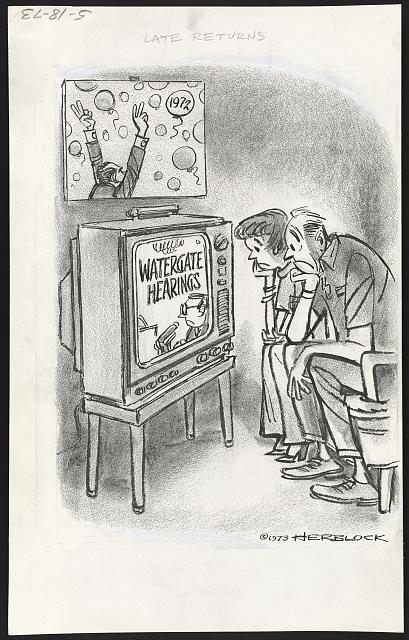
#Nixon50 #OTD 5/17/1973 The Senate Watergate Committee began its first televised hearing. Fifty-one days of “gavel-to-gavel” coverage are now available online through the American Archive of Public Broadcasting, a collaboration of the Library of Congress and WGBH Boston. Learn more about the hearings or watch them online.
4 notes
·
View notes
